Up To $2,500 OFF at checkout - Ends Dec 12
Free 30-day Returns | Lifetime Warranty
Understanding Diamond Color: How It Impacts Beauty and Value

Diamonds have long been a symbol of love, luxury, and status, and understanding the factors that influence their beauty and value is essential for anyone considering a diamond purchase. One of the most critical factors in determining a diamond's overall appearance and worth is its color. This guide covers everything you need to know about diamond color, including the grading system, factors that influence color and how to choose the perfect diamonds of color for your needs and budget.
1. Introduction
Diamond color refers not to the presence of color within a diamond but to the absence or lack of it. As one of the 4 Cs used to describe and determine diamond quality, it is an important factor in a diamond's appearance and value.
2. What is diamond?
Over a billion years ago, deep beneath the Earth's surface, carbon atoms bonded tightly under high temperatures and extreme pressure, resulting in the world's hardest natural mineral: diamond.
Hidden for millions of years, diamonds only reached the Earth's surface after volcanic activity transported them upward in magma.
Then, in the 4th Century BC, the first diamonds were found in India. Today, as they have been for centuries, diamonds are one of the most beautiful and coveted objects on Earth.
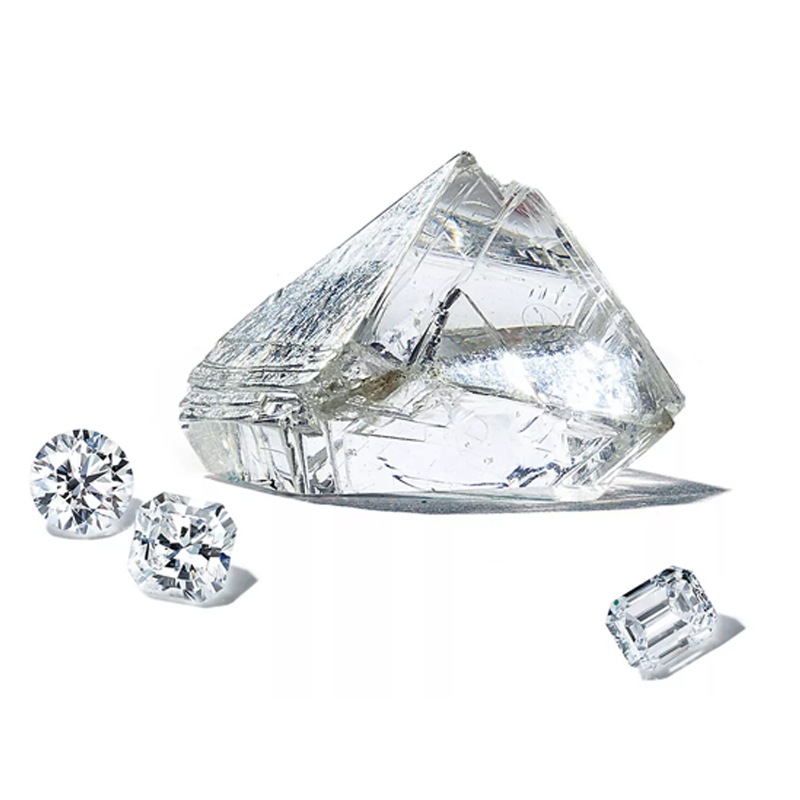

2. What is diamond?
Over a billion years ago, deep beneath the Earth's surface, carbon atoms bonded tightly under high temperatures and extreme pressure, resulting in the world's hardest natural mineral: diamond.
Hidden for millions of years, diamonds only reached the Earth's surface after volcanic activity transported them upward in magma.
Then, in the 4th Century BC, the first diamonds were found in India. Today, as they have been for centuries, diamonds are one of the most beautiful and coveted objects on Earth.
3. What is diamond color?
3.1. Definition
Diamond color refers to the lack of color in a diamond, with perfectly colorless diamonds considered the highest quality with the highest value, and brown or yellow diamonds being the lowest quality. This characteristic is crucial in determining the diamond’s appearance and value.
To ensure consistency in evaluating types of diamond colors, the Gemological Institute of America (GIA) developed a grading scale that ranges from D (completely colorless) to Z (noticeable yellow or brown).
A technically perfect diamond is colorless, like a drop of pure water. Meanwhile, others may contain a slight yellowish tint or a fancy color, such as pink or blue, and fall into a different category altogether.
3.2. Why does diamond color matter?
- Impact on beauty: A diamond color affects its brilliance and sparkle. Colorless diamonds (D-F) allow the most light to pass through, maximizing brilliance and creating a vivid fire effect.
- Impact on rarity: Colorless diamonds are rarer, making them more valuable. While diamonds graded G-H still offer great beauty, they come at a more accessible price.
- Importance of the setting: A diamond stone color can be influenced by its setting. White metals like platinum or white gold enhance a diamond’s colorlessness, while yellow or rose gold settings can add warmth.
4. The GIA diamond color grading scale
4.1. Overview of the grading system
Diamonds are graded alphabetically, on a scale that starts with D (totes colorless) and ends with Z (definitely noticeable color). Even those with exceptionally sharp color vision would struggle to discern the subtle differences between adjacent color grades in diamonds. In fact, even expert gemologists rely on master stones for comparison when determining a diamond color. Let’s break it down:
- DEF: Colorless (highest quality, rare, and expensive).
- GHIJ: Near colorless (great value for beauty)
- KLM: Faint yellow (visible color but budget-friendly)
- NOPQR: Very light yellow (noticeable yellow or brown hues)
- STUVWXYZ: Light yellow (fancy-colored diamonds and rarest to find in nature)

Diamond color chart
4.2 How grading is performed
The GIA evaluates diamonds in controlled lighting and under strict conditions to ensure accuracy. Diamonds are graded on their color in an environment free of external factors that could skew results. Certified gemological labs, such as GIA or the American Gem Society (AGS), play a crucial role in providing reliable and standardized color grades.
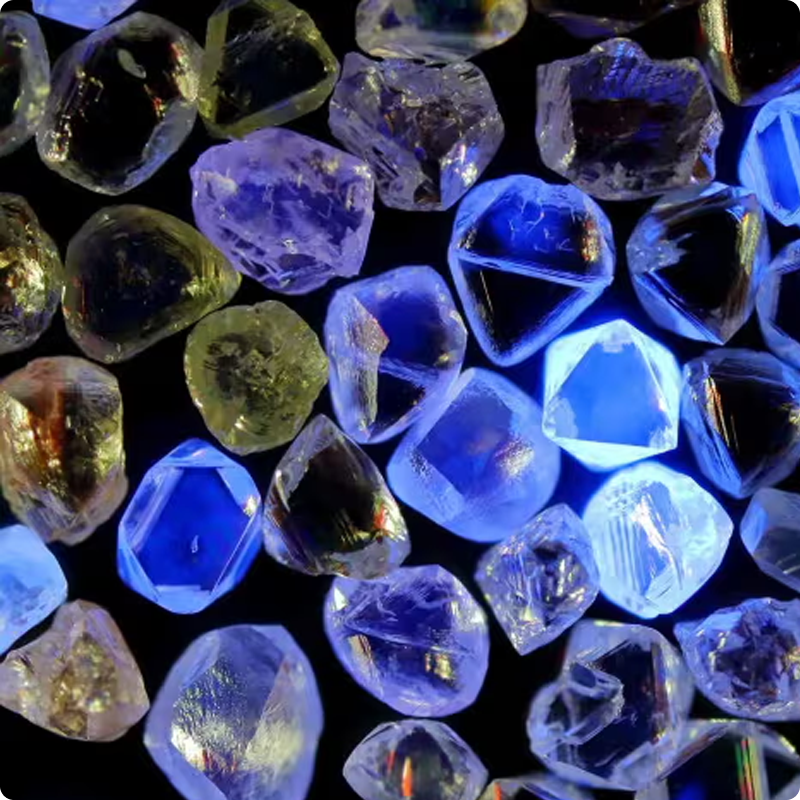
5. Factors that affect diamond color
5.1 Natural formation
Most naturally-colored diamonds are created when trace elements interact with the carbon atoms during the diamond's creation.
The presence of chemical elements such as nitrogen, sulfur, and boron can color diamonds in shades of yellow, green and blue.
The natural yellow color in diamonds is typically caused by the presence of nitrogen atoms within the diamond crystal structure.
5.2 Diamond fluorescence
Diamond fluorescence describes how a diamond reacts to ultraviolet (UV) light. It is evaluated based on the strength of the diamond's response to long-wave UV, which is naturally present in daylight.
Under UV light, some diamonds may emit a blue or yellow glow, but this effect is not typically visible under normal lighting conditions and does not impact the stone's durability.
5.3 Diamond size and shape
Larger diamonds are more likely to show color compared to smaller diamonds. Additionally, the shape of the diamond affects how color is perceived.
Round brilliant diamonds tend to mask color better due to their symmetrical cut, while shapes like emeralds or pears may reveal color more clearly.

5. Factors that affect diamond color
5.1 Natural formation
Most naturally-colored diamonds are created when trace elements interact with the carbon atoms during the diamond's creation.
The presence of chemical elements such as nitrogen, sulfur, and boron can color diamonds in shades of yellow, green and blue.
The natural yellow color in diamonds is typically caused by the presence of nitrogen atoms within the diamond crystal structure.
5.2 Diamond fluorescence
Diamond fluorescence describes how a diamond reacts to ultraviolet (UV) light. It is evaluated based on the strength of the diamond's response to long-wave UV, which is naturally present in daylight.
Under UV light, some diamonds may emit a blue or yellow glow, but this effect is not typically visible under normal lighting conditions and does not impact the stone's durability.
5.3 Diamond size and shape
Larger diamonds are more likely to show color compared to smaller diamonds. Additionally, the shape of the diamond affects how color is perceived.
Round brilliant diamonds tend to mask color better due to their symmetrical cut, while shapes like emeralds or pears may reveal color more clearly.
6. Diamond color vs. other 4 Cs
6.1. Color vs. Cut
Different diamond shapes display color differently. For example, a round brilliant cut diamond will generally be good at concealing color, whereas an emerald cut diamond, which has straight facets, will display any internal color more obviously.
6.2. Color vs. Clarity
Instead of overpaying for flawless clarity, it is much better to choose a diamond that is eye-clean. Once you have found the right clarity grade, then you can focus on color. Once you have identified a color grade that appears colorless in relation to your setting type, then you can put as much of your budget as possible toward the carat weight.
6.3. Color vs. Carat
Larger diamonds are more likely to show noticeable color, but this doesn’t always mean they are of lower quality. A smaller diamond with a higher D-to-E color grade may be priced similarly or even more than a larger diamond with a lower grade.
7. Fancy-colored diamonds
7.1. What are fancy-colored diamonds?
Fancy-colored diamonds refer to any diamond that has a hue other than white. The most common fancy color diamonds are yellow, while the rarest color is red.

Fancy-colored diamonds
The strength of the color depends on the interaction of the trace elements. Whether you prefer a lighter pink or a brighter blue, it is all about the carbon atoms.
7.2. Popularity and rarity
In diamonds, rarity equals value. With diamonds in the normal range, colorless diamonds are most valuable because they are the rarest within the standard range. With fancy color diamonds, intense shades of pink, blue, and green require the highest prices due to their rarity.
7.3. Value of fancy colors
With fancy-colored diamonds, color is the dominant value factor. Even diamonds with numerous inclusions that result in a low clarity grade are prized by connoisseurs if they display an attractive face-up color. The stronger the color, the higher the value.
Compared to fancy yellows and browns, diamonds with a noticeable hint of any other hue are considerably rarer. Red, green, and blue diamonds with medium to dark tones and moderate saturations are extremely rare.
8. How to choose the right diamond color
8.1. Balancing color and budget
Finding the right balance between color grade and budget is key to selecting the perfect diamond. G-H diamonds offer excellent value, as they appear nearly colorless to the naked eye but come at a lower price than D-F diamonds.
8.2. Matching color with settings
The metal of the setting can influence how a diamond stone color appears. White metals like platinum or white gold complement colorless diamonds, while yellow or rose gold can enhance diamonds with warmer hues (for example: G-J or K-M diamonds).
8.3. Considering personal preferences
Personal preference plays a big role in selecting a diamond. Some buyers may prefer the cooler tones of a colorless diamond, while others may prefer the warmth of diamonds with slight yellow undertones. Always view diamonds in various lighting conditions to make an informed decision.
9. Myths and misconceptions about diamond color
9.1. Myth: Only D-grade diamonds are beautiful
A frequent mistake when purchasing diamonds is prioritizing a top-tier color grade (D, E, or F) and overspending. While these diamonds are indeed high quality, the visual difference between diamonds graded D-E-F and G-H-I is often visually the same to the naked eye. Yet, the price difference can be substantial.

D-colored vs. H-colored diamonds
9.2. Myth: Fancy-colored diamonds are always expensive
While some fancy-colored diamonds are incredibly expensive, not all of them are. Fancy-colored diamonds come in a range of hues, and some, like champagne or light yellow diamonds, are more affordable but still offer the same captivating beauty.
10. Conclusion
Diamond color is a crucial factor in determining the beauty and value of a diamond. Understanding the GIA grading scale, the factors that influence color, and how to balance color with other elements of the 4Cs can help you make an informed and satisfying choice when buying a diamond.
Whether you prefer the brilliance of a colorless diamond or the rare allure of a fancy-colored diamond, knowing how color impacts both the diamond's appearance and price will ensure that you select the perfect stone for your needs.
4 CS OF DIAMONDS
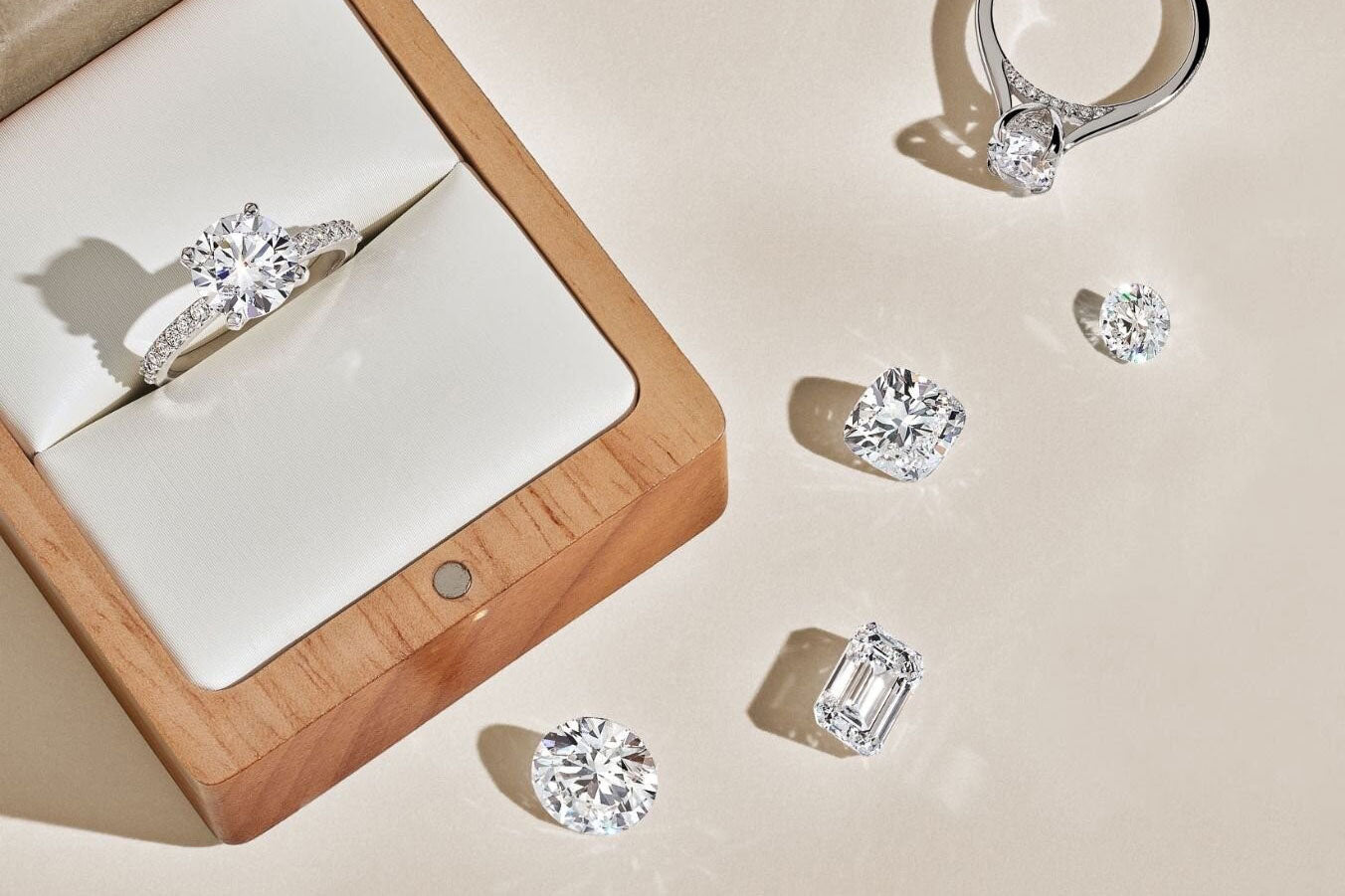
4 Cs of diamond quality
No two diamonds are identical. Each has distinct characteristics. To make an informed choice, focus on the 4 Cs: cut, color, clarity, and carat weight. These factors define a diamond’s brilliance, rarity, and value.
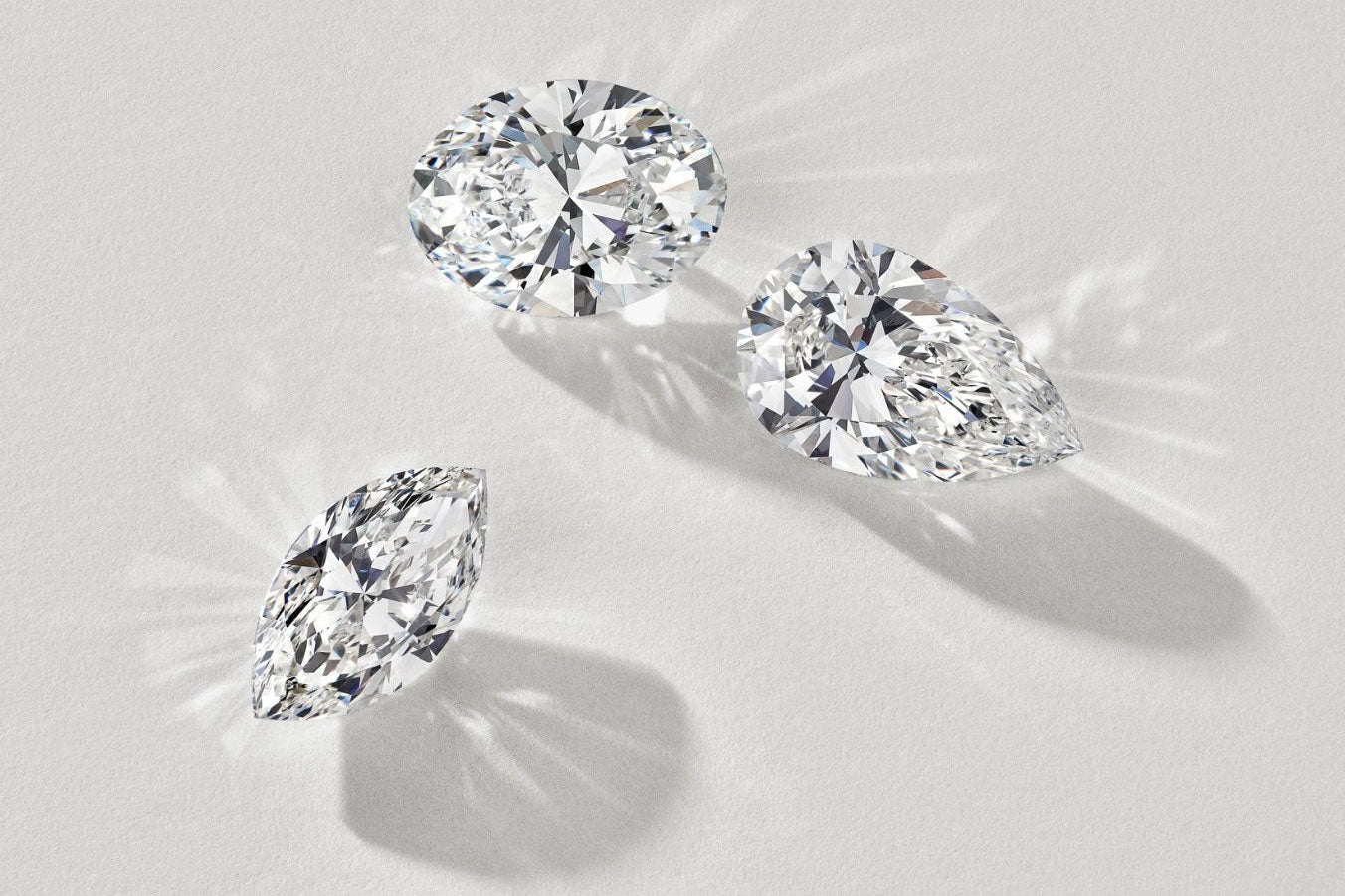
Diamond Cut
Diamonds have long been a symbol of love, luxury, and status, and understanding the factors that influence their beauty and value is essential for anyone considering a diamond purchase.
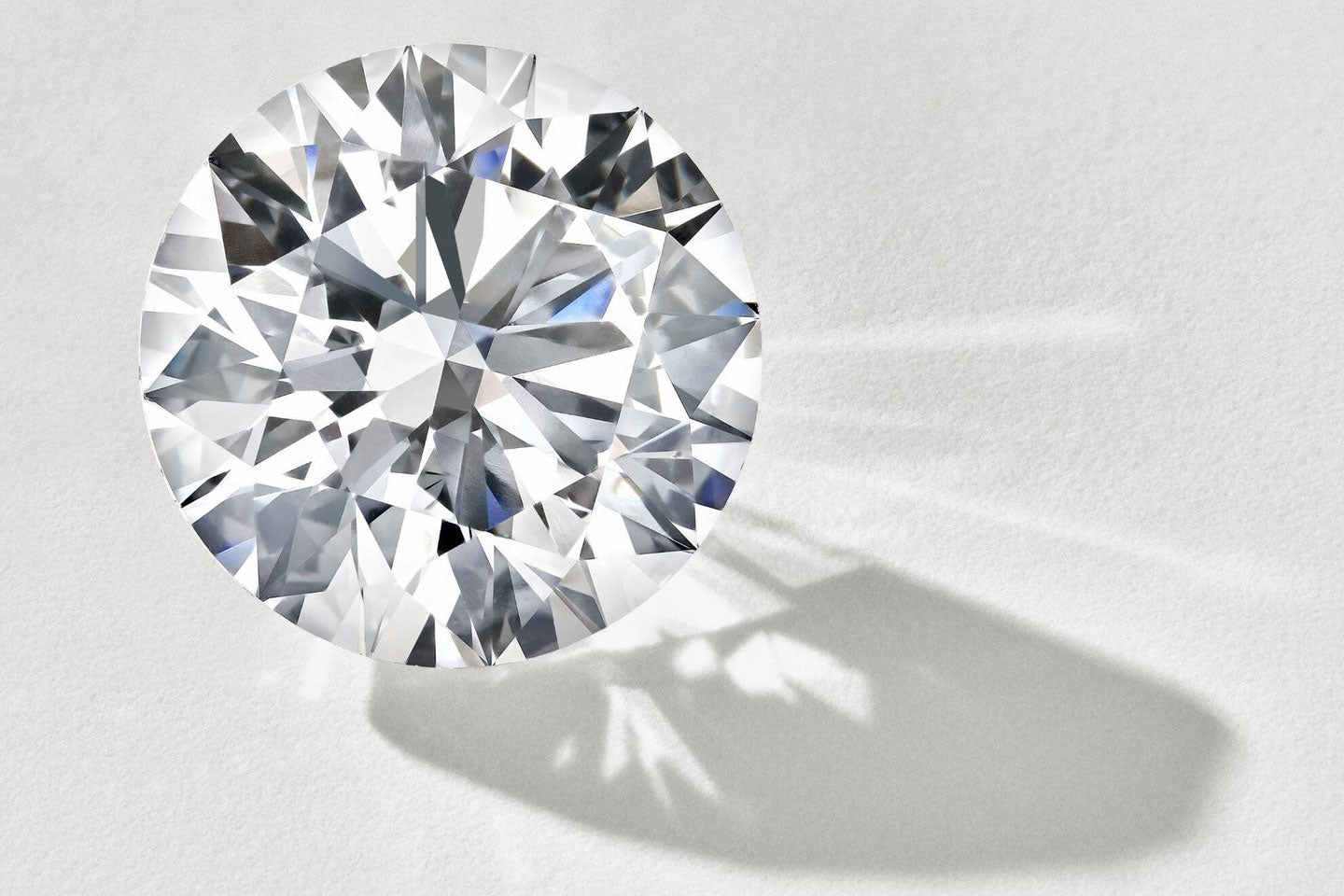
Diamond Clarity
Explore diamond clarity grade and how it will influence the overall appearance of your diamond engagement ring.
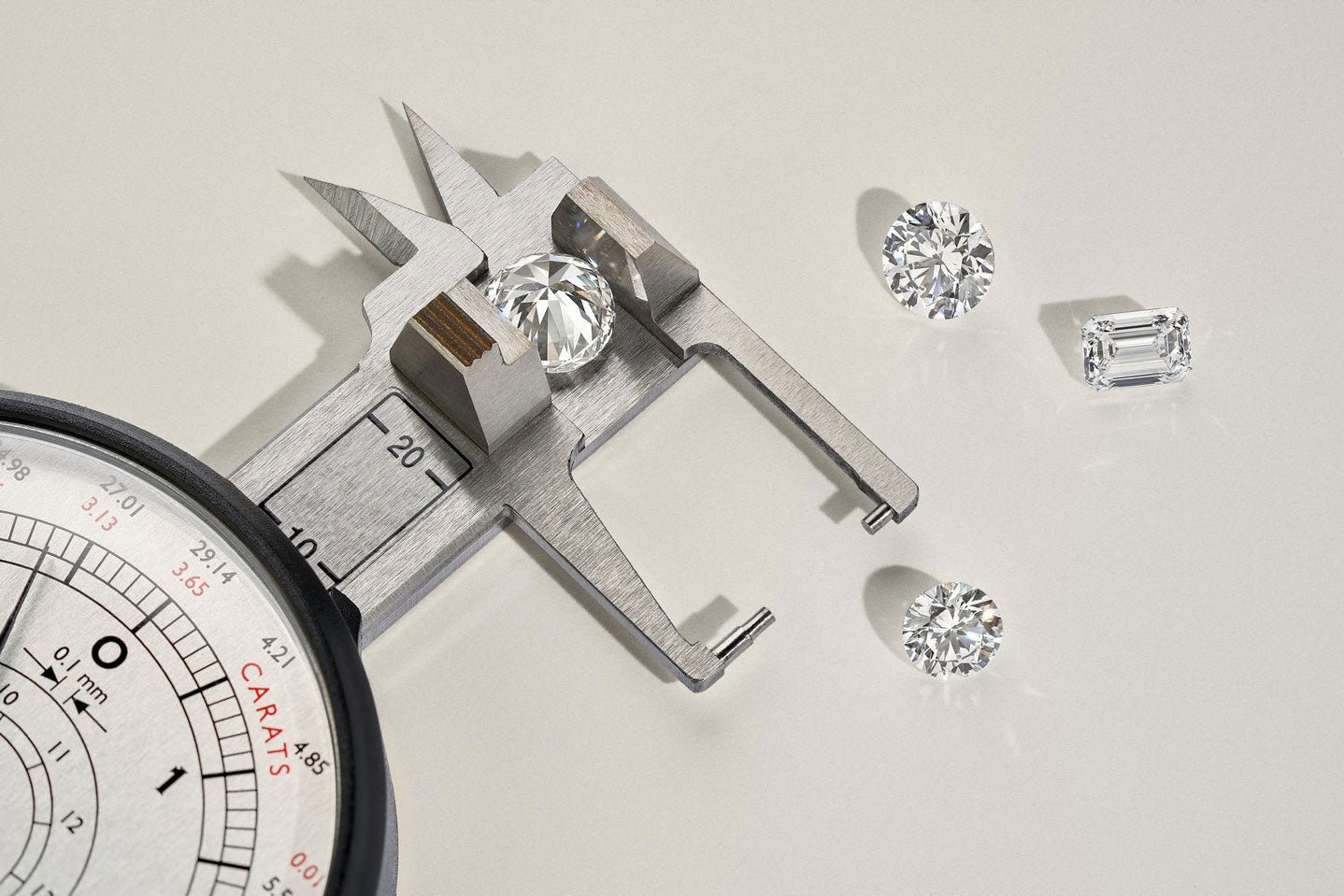
Diamond Carat
A deep dive into how much is a moissanite ring by carat size, factors affecting its value, and tips for selecting the right size for your style and budget.

